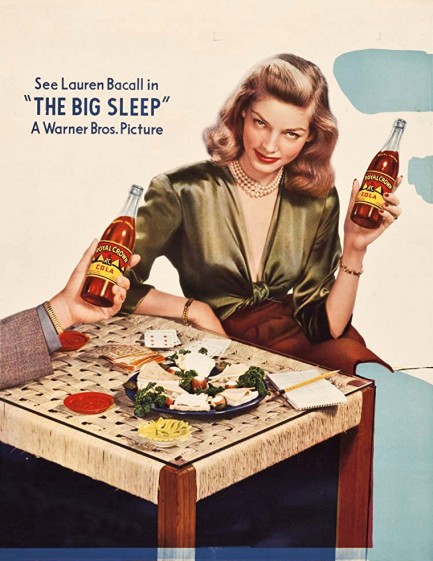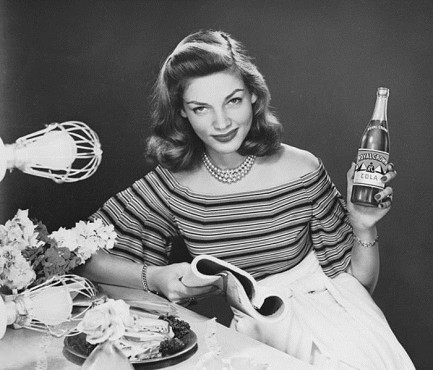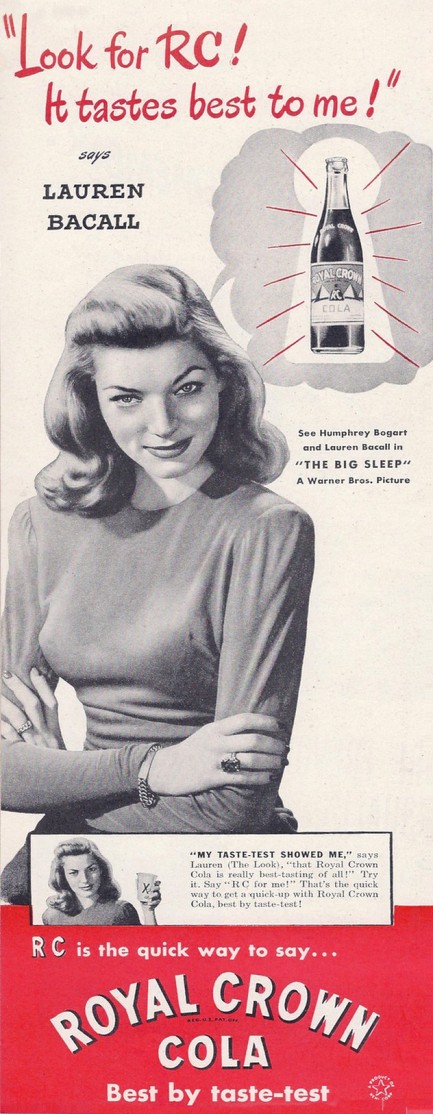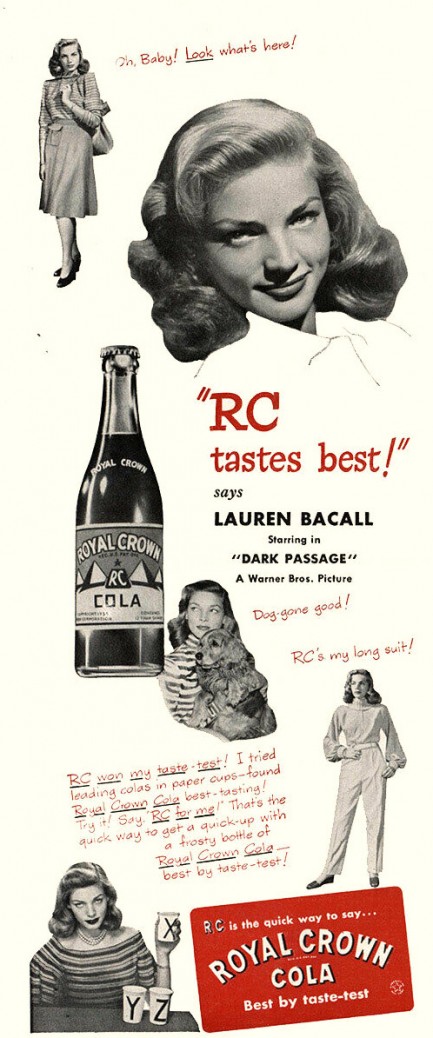 Royal Crown helps consumers to stay awake at the movies. 
Lauren Bacall brings her special brand of smoky sex appeal to this magazine advertisement for Royal Crown Cola, made as a tie-in with her 1946 film noir The Big Sleep. RC was launched in 1905 by Union Bottling Works—a grandiose corporate name for some guys in the back of a Georgia grocery store. The story is that the drink came into being after grocer Claud A. Hatcher got into a feud with his Coca Cola supplier over the cost of Coke syrup, and essentially launched RC out of equal parts entrepreneurialism and spite. Union Bottling Works quickly had a line of drinks, including ginger ale, strawberry soda, and root beer.
However humbly RC Cola began, the upstart had truly arrived by 1946, because The Big Sleep, co-starring Humphrey Bogart, was an important movie, and Bacall was a huge star. She was only one jewel in the crown of RC's endorsement efforts. Also appearing in ads were Rita Hayworth, Veronica Lake, Joan Crawford, Virginia Mayo, Paulette Goddard, Gene Tierney, Ann Rutherford, Ginger Rogers, and others. Bacall flogged RC for at least a few years, including starring in tie-in ads for Dark Passage, another screen pairing of her and Bogart that hit cinemas in 1947. You see one of those at bottom. We can only assume these ads were wildly successful. After all, it was Bacall.
  
|
 |

The headlines that mattered yesteryear.
2003—Hope Dies
Film legend Bob Hope dies of pneumonia two months after celebrating his 100th birthday. 1945—Churchill Given the Sack
In spite of admiring Winston Churchill as a great wartime leader, Britons elect
Clement Attlee the nation's new prime minister in a sweeping victory for the Labour Party over the Conservatives. 1952—Evita Peron Dies
Eva Duarte de Peron, aka Evita, wife of the president of the Argentine Republic, dies from cancer at age 33. Evita had brought the working classes into a position of political power never witnessed before, but was hated by the nation's powerful military class. She is lain to rest in Milan, Italy in a secret grave under a nun's name, but is eventually returned to Argentina for reburial beside her husband in 1974. 1943—Mussolini Calls It Quits
Italian dictator Benito Mussolini steps down as head of the armed forces and the government. It soon becomes clear that Il Duce did not relinquish power voluntarily, but was forced to resign after former Fascist colleagues turned against him. He is later installed by Germany as leader of the Italian Social Republic in the north of the country, but is killed by partisans in 1945.
|

|
|

It's easy. We have an uploader that makes it a snap. Use it to submit your art, text, header, and subhead. Your post can be funny, serious, or anything in between, as long as it's vintage pulp. You'll get a byline and experience the fleeting pride of free authorship. We'll edit your post for typos, but the rest is up to you. Click here to give us your best shot.

|
|












































































